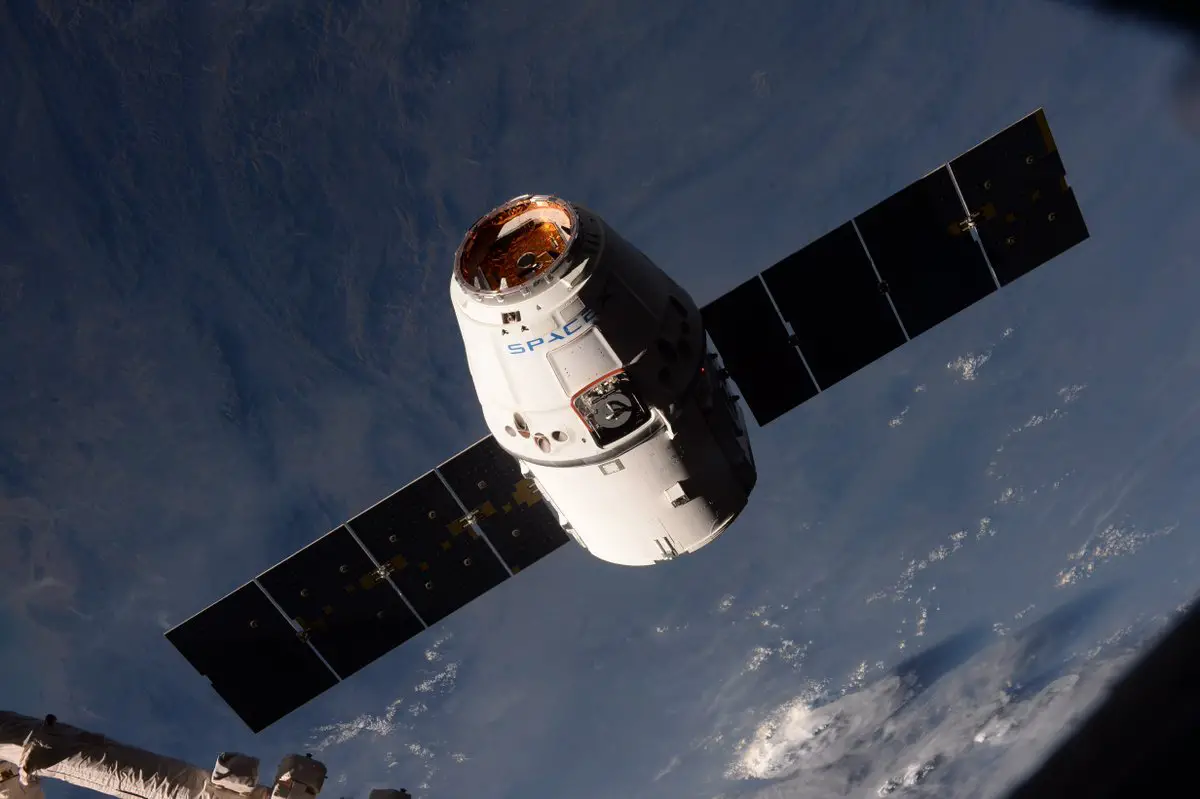At 11:21 a.m. EDT today, the SpaceX Dragon supply spaceship automatically docked to the Harmony module’s forward-facing port. Bob Hines and Jessica Watkins, two NASA astronauts, were observing activities from the International Space Station, which was moving more than 267 miles above the South Atlantic Ocean.
At 8:44 p.m. on Thursday, July 14, Launch Complex 39A at the NASA Kennedy Space Center in Florida saw the liftoff of the Dragon on SpaceX’s 25th contractual commercial resupply mission for the space agency. Dragon will remain connected to the space station for nearly a month before returning to Earth with supplies and research. The following are some of the scientific tests Dragon is sending to the space station:
Mapping Earth’s Dust
Using NASA image spectroscopic equipment, the Earth Surface Mineral Dust Source Investigation (EMIT), created by NASA’s Jet Propulsion Laboratory in Southern California, analyzes the mineral makeup of dust in dry areas of the planet. Mineral dust may be blown into the atmosphere and travel great distances, affecting the temperature, weather, vegetation, and other aspects of Earth.
For instance, absorbing solar energy, dust with dark particles may warm an area whereas dust with light minerals can cool it. Air quality, surface conditions including the speed at which snow melts, and ocean phytoplankton health are all impacted by dust blowing. For the duration of a year, the inquiry gathers photos in order to create maps of the mineral makeup of the dust-producing locations on Earth. We may be able to learn more about how mineral dust affects human populations today and in the future thanks to such mapping.
Faster aging of the immune system
Immunosenescence, a term used to describe changes in immune function, is linked to aging. Human immune cells undergo alterations in microgravity that mirror this situation but occur more quickly than Earth’s natural aging process. Utilizing tissue chips, the Immunosenescence experiment, funded by the U.S. National Laboratory for the International Space Station, examines how microgravity impacts immune function while in flight and if immune cells may recover afterward. In order to evaluate how human cells react to shocks, medications, and genetic alterations, scientists use miniature devices called tissue chips that house human cells in a 3D framework.
Soil in Space
On Earth, intricate colonies of microbes work together to cycle carbon and other nutrients in the soil and promote plant development. The NASA Division of Biological and Physical Sciences-sponsored project Dynamics of Microbiomes in Space investigates how microgravity impacts metabolic interactions in communities of soil microorganisms. The microbial communities that break down chitin, an organic carbon polymer found on Earth, are the subject of this study.
A weather study by high school students
As part of the BeaverCube educational goal, high school students will learn aeronautical science by creating a CubeSat. To monitor cloud characteristics, ocean surface temperatures, and ocean color in order to research Earth’s climate and weather processes, BeaverCube will have one visible and two infrared imagers. Additionally, it will show how to employ an in-orbit calibration approach to apply shape memory alloy technology.
No cells, no genes
Protein may be produced using cell-free technology without the requirement for specialized machinery or live cells that need to be cultivated. Genes in Space-9, funded by the National Lab, examines two cell-free biosensors that can identify certain target molecules and exhibits the creation of protein without cells in microgravity. With the use of this technology, future space missions may be able to monitor the environment while in orbit as well as produce medication and vaccinations on demand.
Superior Concrete
In “Biopolymer Research for In-Situ Capabilities,” researchers examine how microgravity influences the production of “biopolymer soil composite,” an organic material-and-on-site-materials substitute for concrete built from lunar or Martian dust. It is feasible to improve the quantity of shielding by making use of materials that are around where the building is taking place.
More than a hundred studies are being undertaken at any given time in a variety of scientific disciplines onboard NASA’s orbiting space laboratory. The NASA Artemis program will use advancements in these fields to showcase technology for future human and robotic exploration beyond low-Earth orbit to the Moon and Mars. These advancements will also help humans stay healthy during long-duration space flights.
Source: SpaceRef

